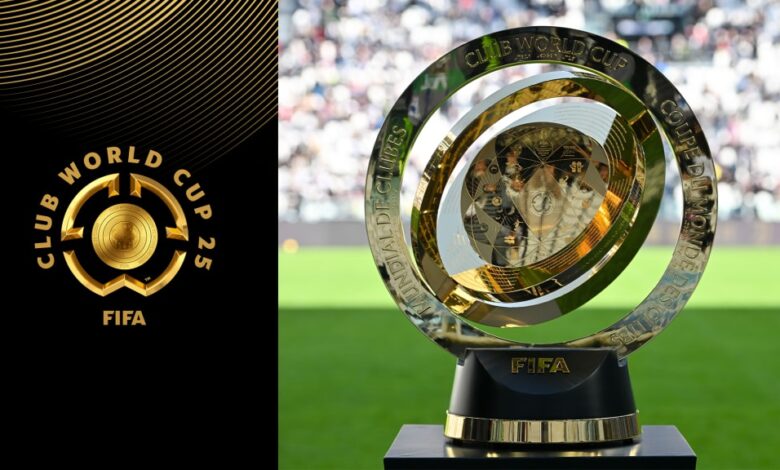Top Tactical Trends Shaping the 2026 World Cup

Discover the key tactical innovations influencing international football and how national teams are adapting ahead of the 2026 World Cup.
Tactical Trends to Watch Ahead of the 2026 World Cup
As the countdown to the 2026 FIFA World Cup intensifies, coaches and analysts across the globe are refining strategies that could define the tournament. With Mega H5 constantly evolving through the influence of elite domestic leagues, the tactical approaches at the international level are becoming more complex, dynamic, and unpredictable.
In this article, we explore the most important tactical trends shaping the build-up to the 2026 World Cup—and what fans should look for when the tournament kicks off.
1. The Rise of Hybrid Formations
One of the most visible changes in modern football tactics is the increasing use of hybrid formations—flexible systems that shift between structures depending on in-game situations.
🔄 Examples in Action:
- 4-2-3-1 into 3-2-5: Full-backs tuck into midfield while wingers push high, mimicking what Pep Guardiola has implemented at Manchester City.
- 3-4-2-1 morphing into 5-4-1: A shape favored by teams who prioritize quick transitions and compact defending, common in several South American and European qualifiers.
Expect national teams like England, Germany, and Brazil to deploy multiple formations within a single match, adapting to the flow of play as many players are already used to these transitions in their respective leagues.
2. Inverted Full-Backs and Midfield Overloads
Originally a club-level trend, the use of inverted full-backs (full-backs drifting into central midfield) is becoming a staple for international managers.
⚙️ Tactical Purpose:
- Creates midfield overloads.
- Enhances build-up play and ball control.
- Disrupts the opponent’s pressing structure.
Who’s Doing It?
- Spain and Japan have deployed this system to perfection during qualifiers.
- France has used players like Theo Hernández and Jonathan Clauss to invert roles, giving their midfield more options in buildup phases.
The trend’s success is rooted in top league-level tactical training, where possession-based systems dominate.
3. Pressing High, Defending Deep: Tactical Flexibility
In the 2022 World Cup, we saw high pressing (Germany, Argentina) clash with deep defending (Morocco, Croatia). In 2026, expect teams to master both.
🧠 What It Means:
- High pressing disrupts build-up and forces errors—used by teams with athletic, well-drilled forwards.
- Low block defending frustrates superior teams—used by nations lacking depth but boasting organization and counter-attacking flair.
Top sides are now comfortable shifting between these approaches mid-game. The inspiration comes from league managers like Klopp, Ancelotti, and Postecoglou who’ve shown the value of tactical adaptability.
4. The Return of the Number 10… But Reimagined
Once thought extinct in modern football, the traditional No.10 role is evolving.
🧩 Repositioned Creators:
- Instead of roaming freely, playmakers now operate in half-spaces, threading passes between the lines and interchanging with wide forwards.
- Players like Jude Bellingham, Pedri, and Paquetá are redefining the role, blending creative freedom with pressing responsibilities.
National teams with strong domestic leagues that emphasize technical midfield play are leading this shift—particularly Spain, Brazil, and Argentina.
5. Goalkeepers as Playmakers
Goalkeepers are now the first line of attack. Inspired by the likes of Ederson and Ter Stegen, national teams demand more than shot-stopping from their No.1s.
⚽ Key Responsibilities:
- Initiating attacks with long-range passes.
- Sweeping behind high lines.
- Acting as an extra defender in buildup phases.
Watch for this trend with teams like Germany, Portugal, and Uruguay, whose goalkeepers play in leagues where this style is already the norm.
6. Set-Piece Mastery Returns
While tactics are often discussed in open play, set-pieces remain crucial. With fewer training camps and limited time to build chemistry, teams are focusing on maximizing dead-ball efficiency.
🔧 Tactical Implementation:
- Innovative routines from corners and free-kicks.
- Zonal and hybrid marking to reduce defensive errors.
- Near-post flicks and blockers to create space in the box.
Teams like England and Belgium have hired specialized set-piece coaches, drawing influence from league football where analytics now play a larger role in planning.
7. Wide Forwards as Central Threats
In today’s game, the most dangerous attackers often start wide—think Mbappé, Vinícius Jr., or Leão—but quickly cut inside to act as strikers.
Tactical Purpose:
- Stretch opposition defenses.
- Create 1v1 opportunities.
- Free up space for overlapping full-backs.
This tactic, which became prominent in elite leagues, is now a fixture in national setups. Expect more central overloads from wide attackers in 2026.
8. Squad Rotation and Depth Are Tactical Tools
The expanded tournament format (48 teams) means longer campaigns and more rotation. Tactical depth across the squad is now vital.
🌍 What This Means:
- Teams with domestic leagues that develop versatile players (like the Premier League or Bundesliga) will benefit most.
- Coaches will use rotation not just to rest players, but to switch tactics.
Squads like France, England, and Portugal are stacked with tactical flexibility—a key edge in managing the demands of the group and knockout stages.
Final Thoughts: Tactical Evolution Meets Global League Influence
The tactics that will define the 2026 World Cup are already visible across today’s best football leagues. From hybrid formations and inverted full-backs to creative playmakers and pressing systems, national teams are increasingly mirroring the innovations of elite clubs.
As fans, analysts, and pundits look ahead to the tournament, understanding these tactical trends is essential for appreciating how the beautiful game continues to evolve.
📣 Be Part of the Evolution – Support Your League!
Whether it’s the tactical genius from the Premier League, the flair from La Liga, or the discipline of Serie A—each league plays a pivotal role in shaping the tactics we’ll witness at the 2026 World Cup.
Support your league. Support the football culture that fuels the next generation of international glory.





